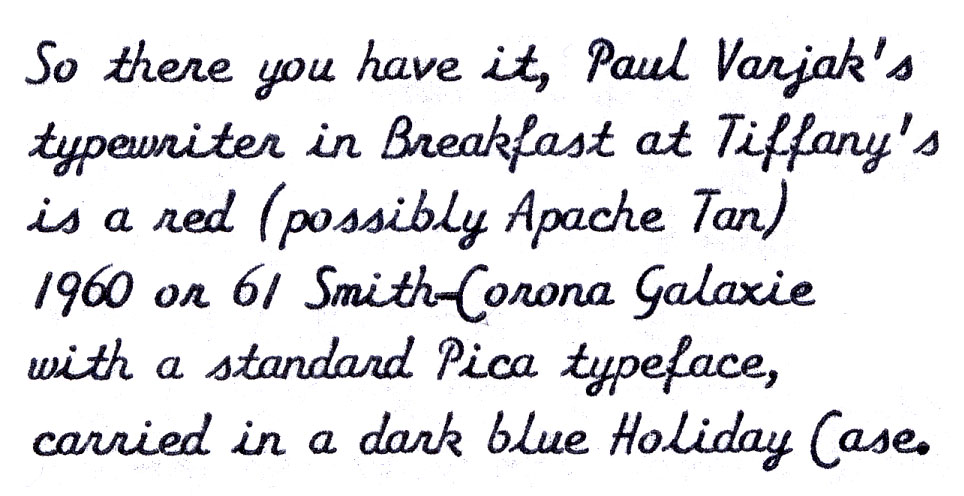 UPDATE: Brian asks below in the comments why I call this machine “red”. The simple answer is “it looks red to me”, but it’s an important question that deserves further examination. He owns a machine of this vintage which he describes as “dark orange”, so the question would be twofold:
UPDATE: Brian asks below in the comments why I call this machine “red”. The simple answer is “it looks red to me”, but it’s an important question that deserves further examination. He owns a machine of this vintage which he describes as “dark orange”, so the question would be twofold:
1) is the color shown in “Breakfast at Tiffany’s” the same color as Brian’s 1959 example? Are the observed differences just an artifact of a color-shifted film print?
2) if they are the same color, and all reddish-orange Galaxies of this vintage as well, what was the name of the color? The 1964 Service Manual doesn’t list any reds or oranges as color options, but does list “Apache Tan”. If that was not the name, what was?
Here’s Brian’s machine, for comparison.
I also went and dug up some ads of the period. Interestingly, there’s a red Galaxie on almost every one I saw. The color was advertised heavily, but apparently was not popular, judging from the number of surviving examples.
Another sorta related interesting item: The color option list shows a switch at serial number 6T363650, a number that falls right inbetween these two machines in the TWDB:
 You know what else I noticed? The “Smith-Corona” label was removed from the ribbon cover and added to the front faceplate on that serial number.
You know what else I noticed? The “Smith-Corona” label was removed from the ribbon cover and added to the front faceplate on that serial number.
Update: here’s a machine that Richard Polt has which is post-1964, and therefore its color is “Sierra Tan”.
FINAL UPDATE: The color is “Hunter Red”. Here’s a close-up I found in a May 1960 issue of “Boy’s Life” magazine. The ad is printed in black & white, but it’s the same as one of the larger color ones above, and we see the color of the main machine shown is called “Hunter Red”:
Final Verdict: Paul Varjak’s typewriter in “Breakfast at Tiffany’s” is a 1960 Smith-Corona Galaxie with 10″ Carriage, 12CPI Elite typeface, in “Hunter Red” and carried in a deluxe blue Holiday Case.
.. and one final thought: the plot of “Breakfast at Tiffany’s” could be thought of as Holly’s journey to master her “Mean Reds” so that she can finally commit to love with Paul and Cat. In thinking of plot reasons why Paul’s typewriter had to be red, one line of reasoning I followed was that perhaps the typewriter was representative of Paul’s “Mean Reds”, which prevented him from commitment. Holly solving his “mean reds” with the gift of a typewriter ribbon gave Paul control of his writing life again. Opinions on that?
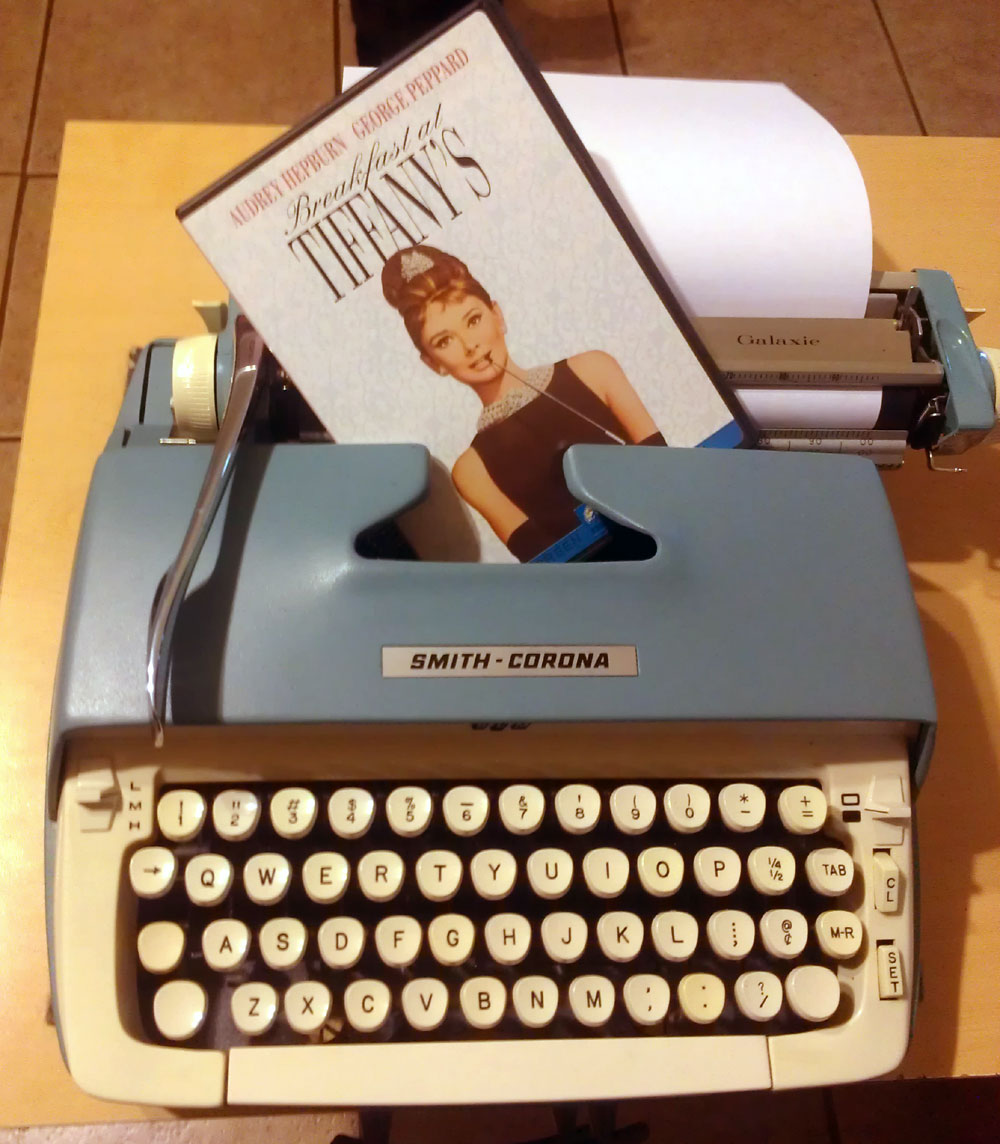
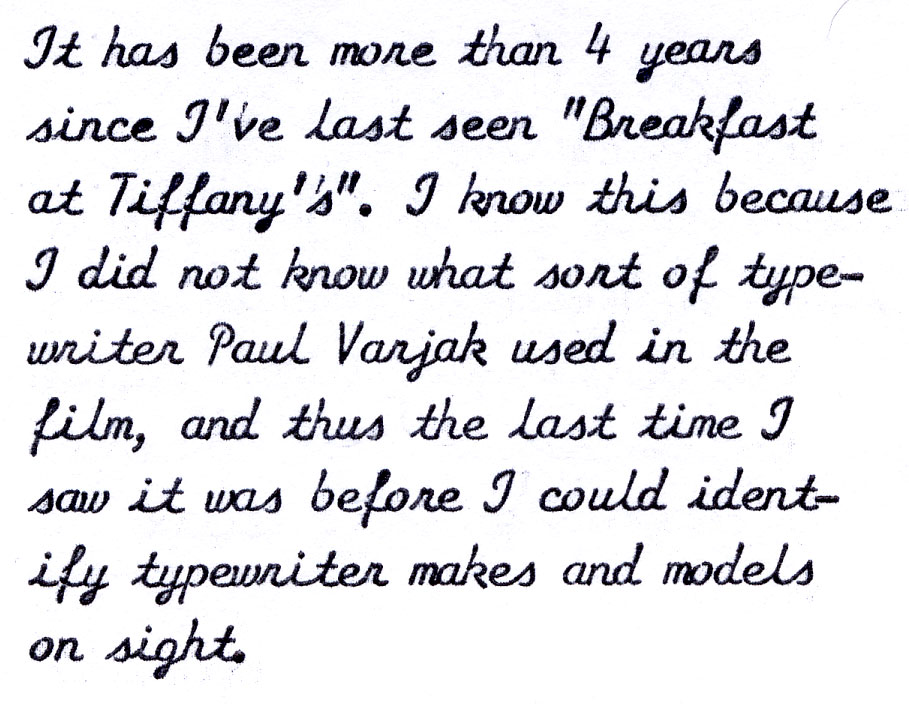
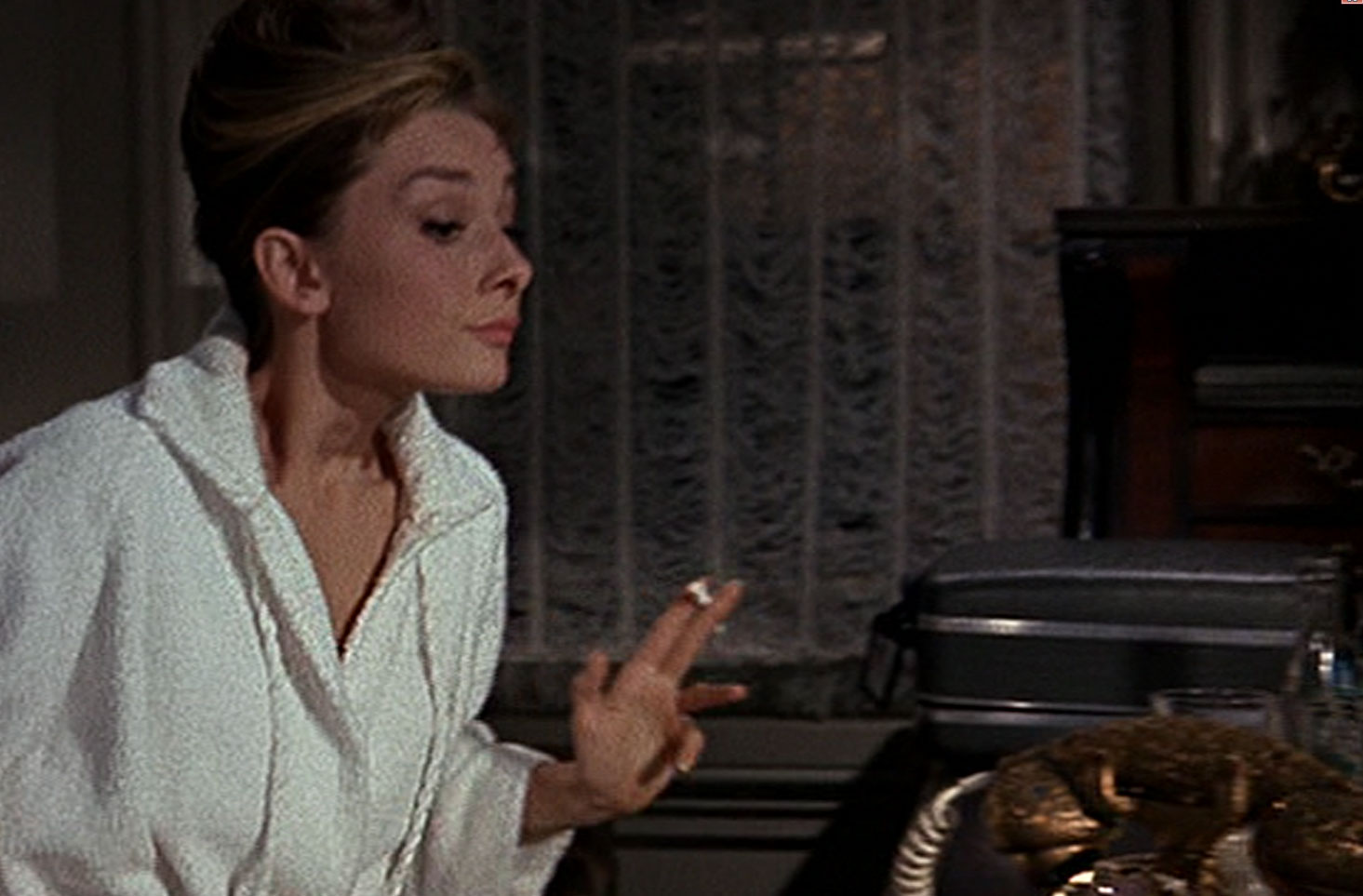
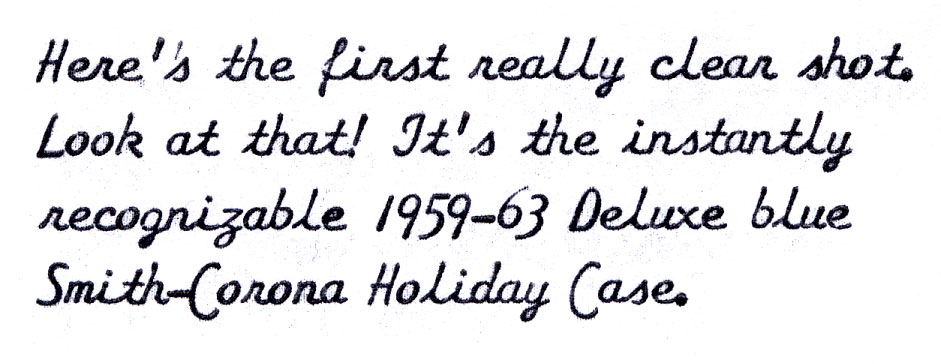
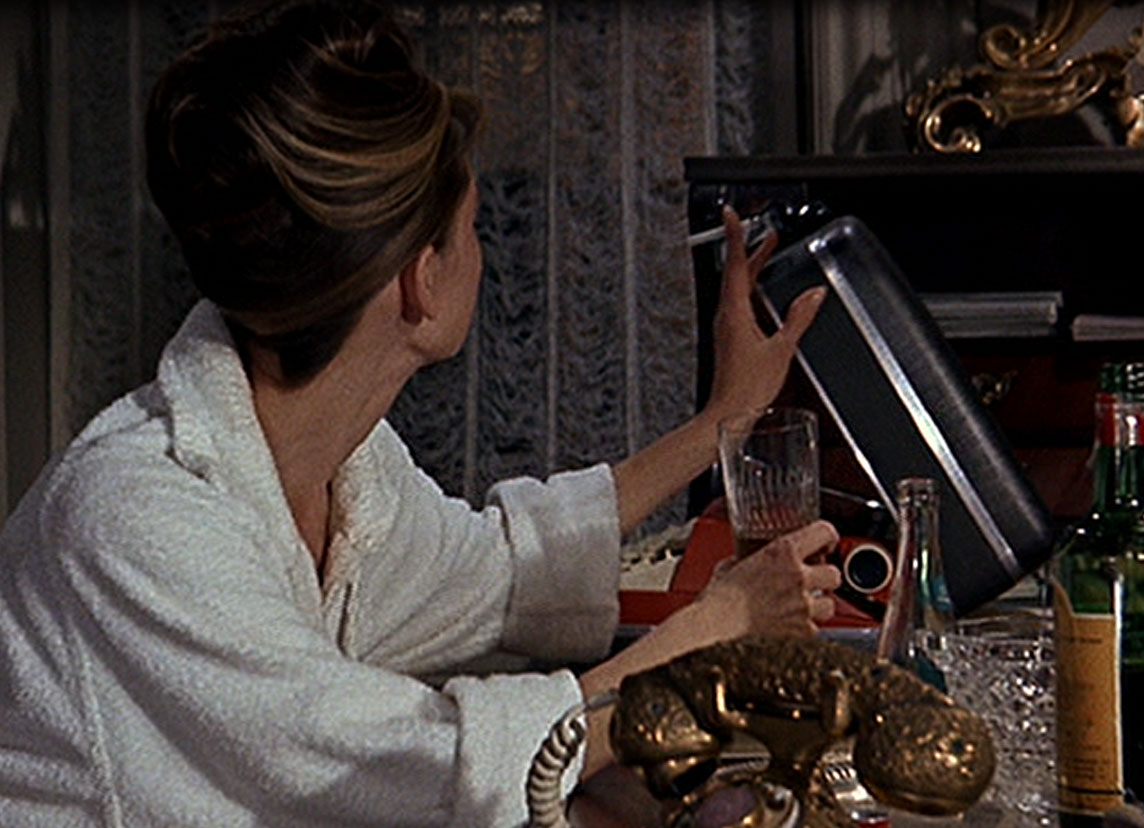

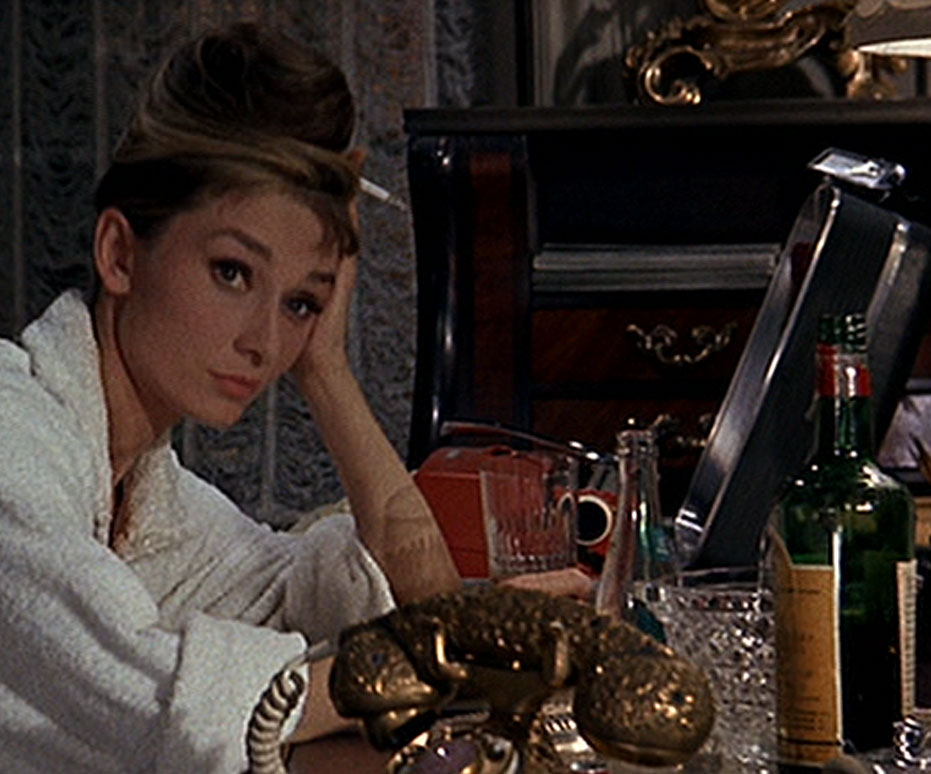
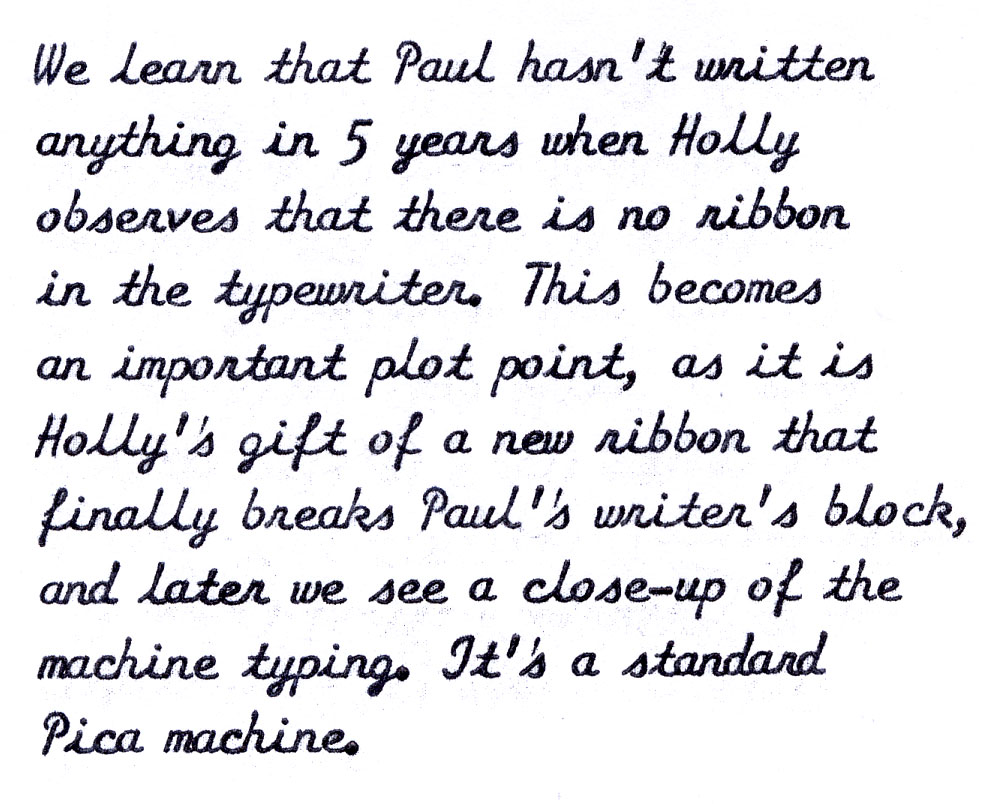
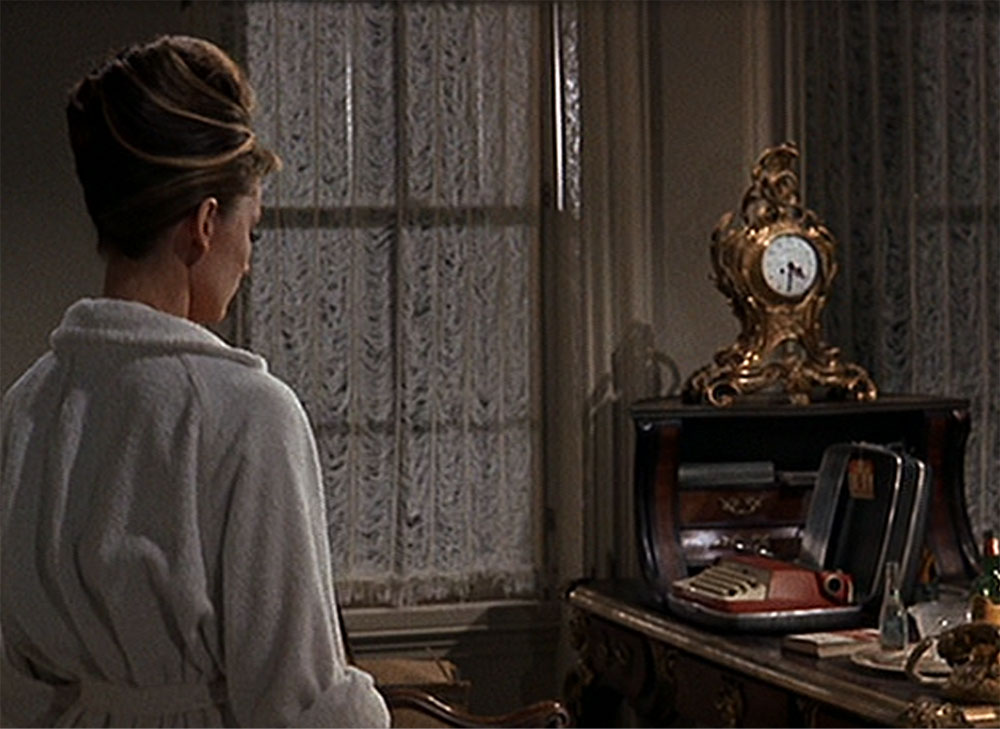
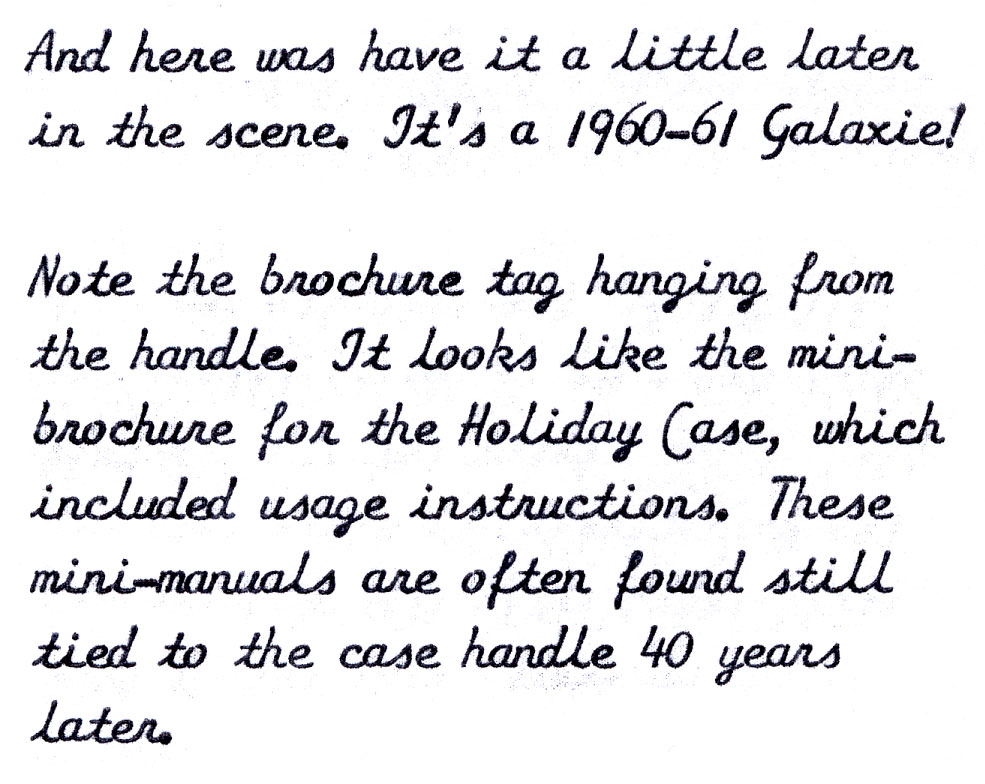
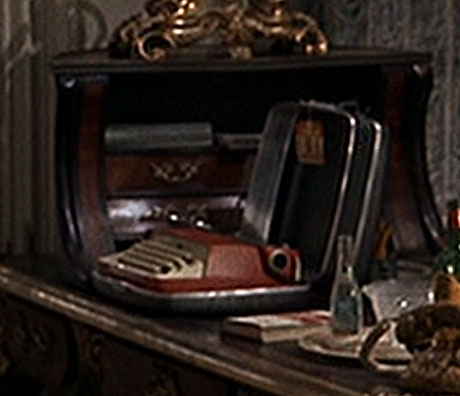
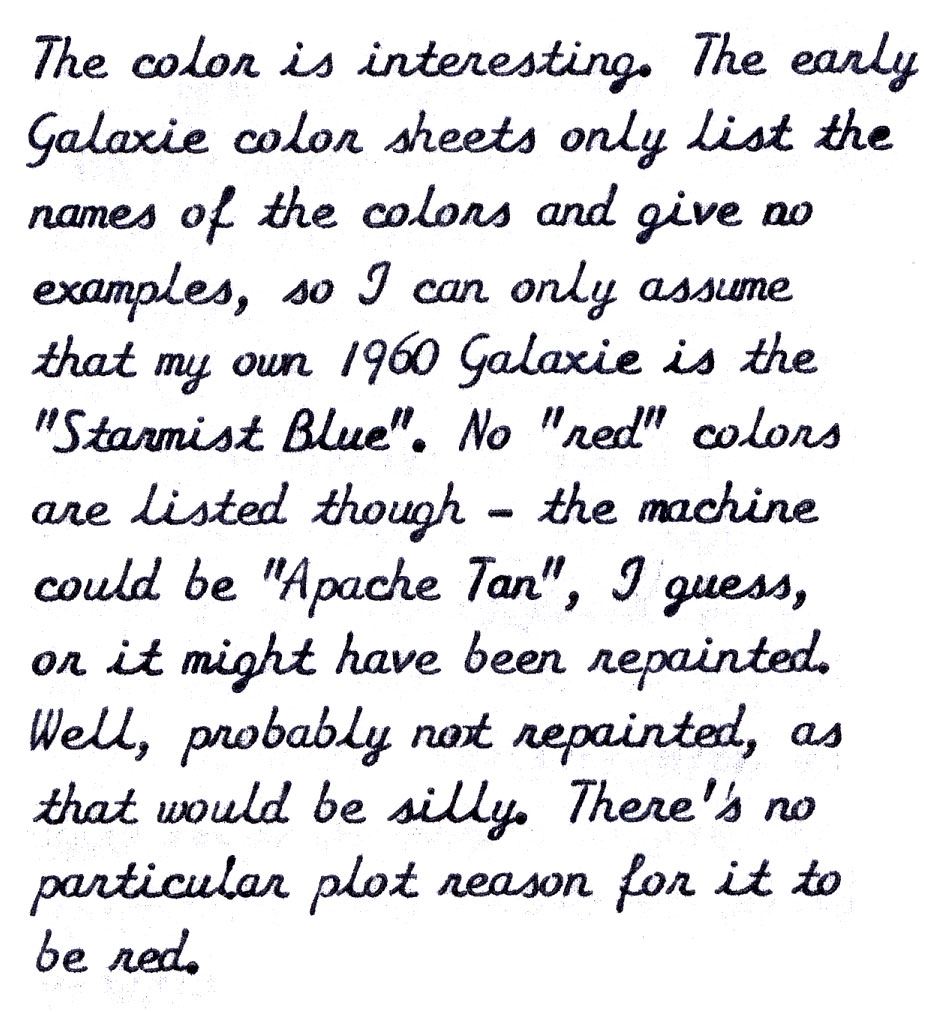
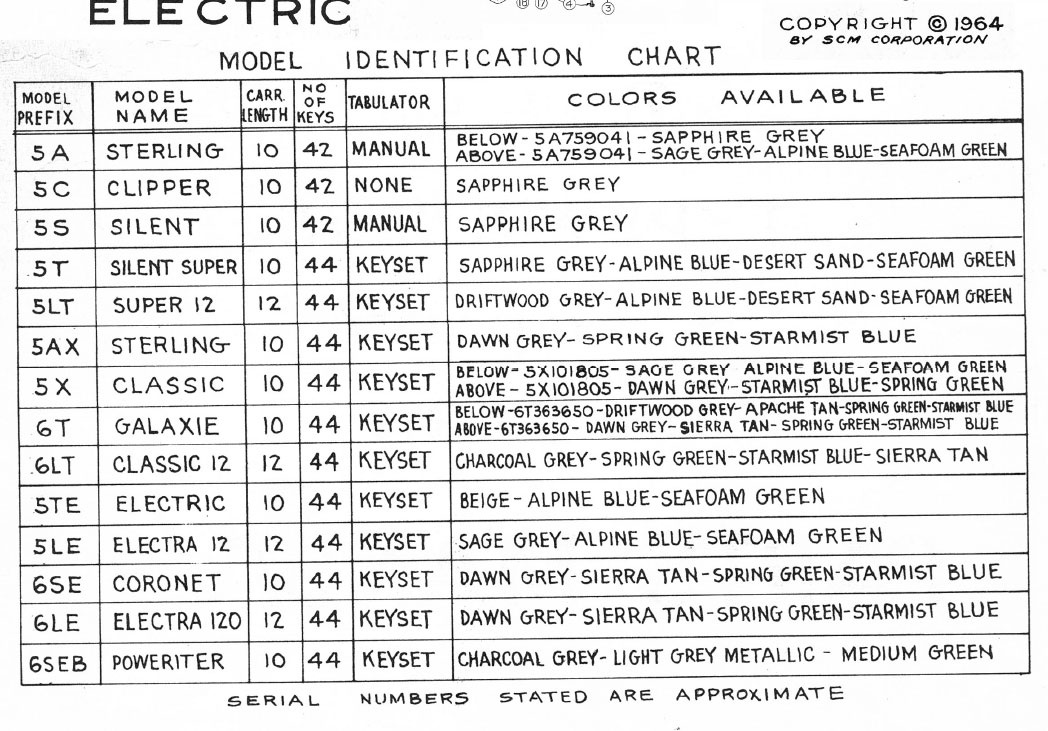
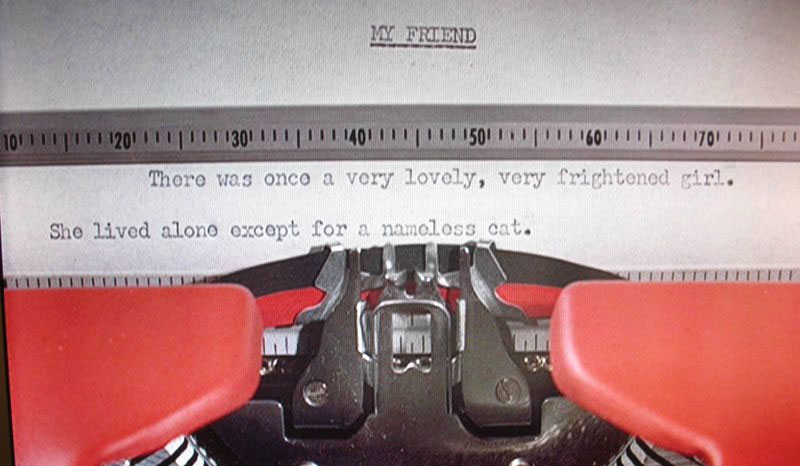
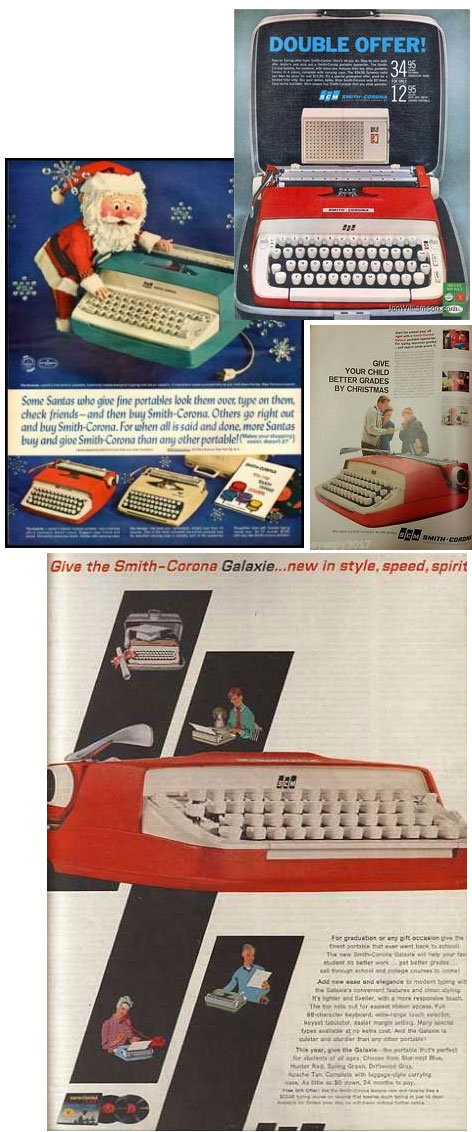
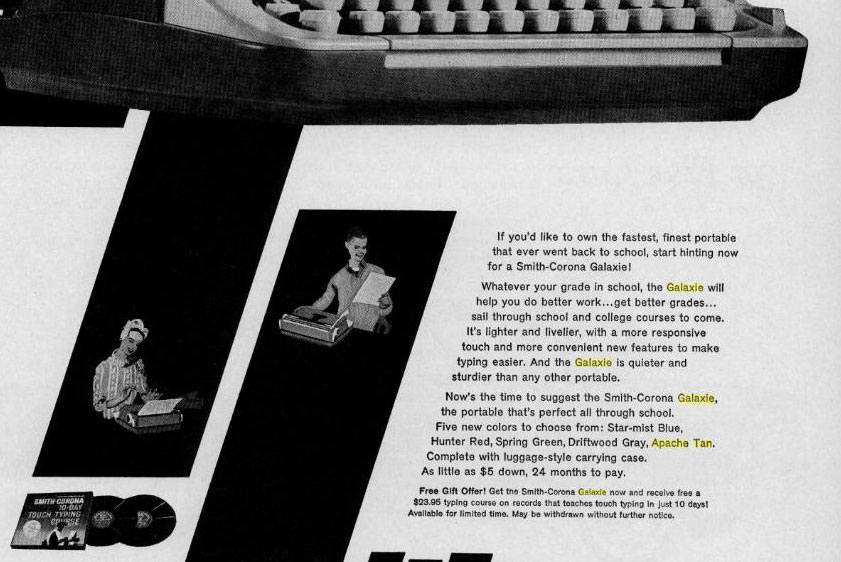
Ted-
I am curious why you call this red.
I have a very early 1959 model and I would call it a dark orange…. Nothing tan about it, so it almost seems like the color is omitted for some reason.
My machine lacks SCM markings, and is just branded Smith-Corona.
I wonder if this color was snuck in right before the Marchant acquisition, and they nixed it, or something along those lines? I’ve seen three of these – the Davis Brothers have one.
Interesting. Someone posted on reddit last week or so, asking what typewriter he was using. I came up with the Galaxie as well, and did find an etsy listing for a 1959 red Smith-Corona Galaxie. I’m not going to post a link here, but it is still listed on etsy at this time. In the etsy listing, it clearly looks red, as it does in the movie. Curious that red is not listed.
Hmm, looks quite red to me.
It certainly doesn’t look orange. Mind you my sons have accuse me before of being colour blind, but that’s usually a confusion between blues and greens. :)
Maybe it’s the lighting in the scene but Varjak’s looks crimson (dark red) while the one in the ad looks scarlet (red orange). Red by any other name.
Nice write-up, Rev. You should check out a film called “Paris When It Sizzles (Richard Quine, 1964). There’s an Olympia SM7 in it that should have gotten equal billing alongside William Holden and Audrey Hepburn.
I’d date the Galaxie as being a little older–Smith-Corona started putting huge chrome bands on their cases around 1960 or 1961, if I remember correctly; the case with the big band in the same color was only used in 1959 and early 1960 (if my memory is correct). Around 1963 or 1964, the familiar dark gray case with the narrow band (the trimline) case appeared.
Hmmn, good observation! My Starlight Blue 1960 Galaxie (#6T 292996X) has the same skinny chrome bands on the case as Paul’s does, and it would have fallen pretty early in 1960. Brian’s machine linked above is an early ’59 and lacks the SCM block logo on the front plate that Paul’s machine does have. If SCM switched to fat bands in late 60 or early 61, then seems we could peg the Breakfast at Tiffany’s machine right between late ’59 and late ’60, depending on when the block SCM logo was added.
This conveniently falls right into the time they were presumably buying props for the film. It was released in 1961, so that purchase may have happened as early as mid-1960, and depending on how fresh the dealer’s inventory was, the machine they got would have been right there between late 1959 and early 1960.
Any idea what such a machine would cost back then. I see prices on one of the ads, but looks like it’s in combination with a radio.
Varjack’s machine was actually an Elite 12CPI. They retailed for $149.27. Hope this helps.
Why a red and white typewriter? Because that is the same color as the color scheme on Paul’s book jacket!
I have been looking for this typewriter for a long time and I finally was able to pull the trigger and purchase it. I must say I have referenced this article many times, so I’d like to thank you as I feel like you have helped me to make my purchase.
I appreciate you. Appreciate the research. I value your appreciation of the film and updating your entry. Take care!
I’m watching Breakfast at Tiffanys as I write this and I just noticed Paul’s red and white typewriter. I immediately thought, Smith Corona or Brother, the two typewriter brands from my childhood in 1960’s Brooklyn. As a lover and collector of kitsch I naturally had to know more about it and see if I might be able to locate an identical one for purchase, not that I need it, just for the pleasure of owning it. That’s what led me here. So satisfying to know there are people like us that have a passion for things from the past that most others would never even notice.
I enjoyed this discussion a lot. It raises a good question or series of questions for persons who collect and enjoy typewriters. A lot of typewriters appear in movies–just to cite a couple of examples– the reporters’ typewriters in the movie “Leatherheads” or those of the baseball movie “42.” It’d be fun to identify those.
Heh, I’ll be putting up an article on the typewriters of “Dr. No” today. (: